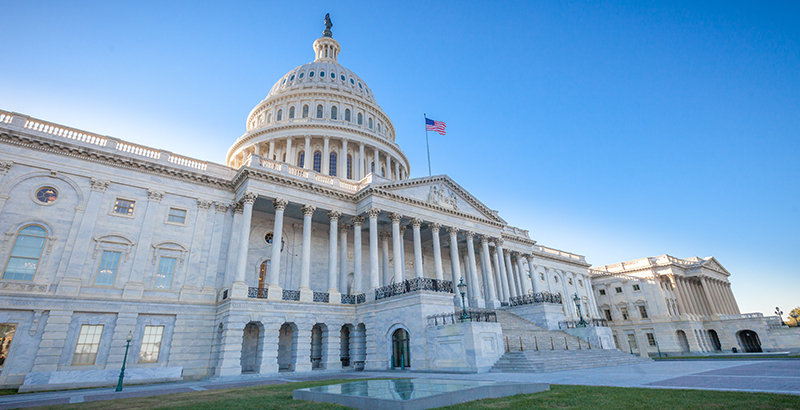Wise: Closing the Digital Divide Now Is an Investment in Our Future. Congress Must Step Up With Funding — Before Summer Is Over

The COVID-19 pandemic has forced many in our country to work and study remotely and laid bare glaring inequities in access to broadband and devices for many students and families. Almost overnight, our nation vaulted to 100 percent of students engaged in full-time distance learning. Although the digital divide existed prior to the pandemic, COVID-19 can be the impetus for major state and federal policymaker action in preparing for the post-COVID world.
As governor of West Virginia, and as a longtime education advocate, I supported early investments in addressing the digital divide. I championed accelerating broadband to schools through the Federal Communications Commission E-rate program, founded Future Ready Schools, partnered with Florida Gov. Jeb Bush to develop the first principles for digital learning and joined North Carolina Gov. Bev Perdue’s DigiLearn board. The bipartisan commitment to these initiatives highlights the importance of digital learning during and after the pandemic. Students who lack essential broadband and technology struggle to engage in digital learning, and their families are unable to access services they need, like telehealth and counseling, to provide stability during this unprecedented time.
The digital divide in the nation is severe, as 21 million Americans have no high-speed internet connections. This issue is felt even more acutely among particular populations, with 22 percent of rural communities and 27 percent of tribal communities lacking high-speed internet. Brian Toth, superintendent of Saint Marys Area School District in Pennsylvania, noted that because 30 to 40 percent of children in his rural district do not have internet access at home and half lack digital devices, it was impossible to fully go online. His district is not alone. For the more than 1 in 10 students without access to a laptop or desktop, doing homework on a cellular phone is the only option. Inadequate access to technology hits even harder in our low-income communities, where 1 in 4 teens lacks access to computers, compared with only 4 percent in higher-income households.
COVID-19’s devastating impact forces us to confront this persistent digital divide. Students are struggling to complete their work online; over 50 percent fewer students accessed online math courses once COVID-19 shut schoolhouse doors. Even more concerning is the rate of student attendance when schools went online. In April, 47 percent of public school students reported not attending virtual classes, and teachers and districts noted significant absences of students and families as they moved to distance learning. Not completing work or attending virtual learning sessions means our students will suffer well into the future. This pandemic ensures further need for distance learning into the foreseeable future, and these same students who lack access due to the digital divide will have even deeper learning loss. Ruth López Turley, director of the Houston Education Research Consortium, noted, “If current learning rates are like summer learning rates, research tells us we can expect existing gaps to grow — perhaps by a lot.”
As it has done with transportation and electrification, Congress must provide more targeted support and funding to close this increasing digital divide. Recent stimulus CARES Act funding was a start, but it did not provide enough funds for K-12 schools to give each child access to broadband and a device. Besides dedicating additional funding, the legislative effort should mandate the FCC to provide flexibility in E-Rate to ensure that libraries and schools can provide hotspots to every low-income child as soon as possible. The House of Representatives recently passed the HEROES Act, which included $1.5 billion for an Emergency Connectivity Fund. The Senate should go further and enact the recently introduced Coronavirus Child Care and Education Relief Act to provide the needed $4 billion to support subsidies for families to help pay for internet services during the pandemic. The relief package must also include funding for devices and high-speed internet connections, and it must allocate more money than the House version.
Funding to address the digital divide is an investment with clear returns for advancing economic and equity goals. It is about more than connecting students to distance learning during the pandemic. Closing the digital divide will support economic recovery, allowing families access to the Free Application for Federal Student Aid (FAFSA) and college applications, workforce training, telehealth, job applications and interviews. Access to modern digital technology for all will provide the foundation to safeguard the well-being of our students, citizens and communities, and thus help restore our economy.
This next month is the time to act — before the upcoming school year begins and as Congress enacts its last large stimulus package before Labor Day. Schools are developing reopening plans as we speak, and, at the guidance of the Centers for Disease Control and Prevention, preparing to use distance learning. Congress must step up to the task of closing the digital divide to benefit all students now and into the future, ensuring that our communities and nation are competitive in a global, digital world.
Bob Wise is a former governor of West Virginia and member of the U.S. House of Representatives.
Get stories like these delivered straight to your inbox. Sign up for The 74 Newsletter

;)
